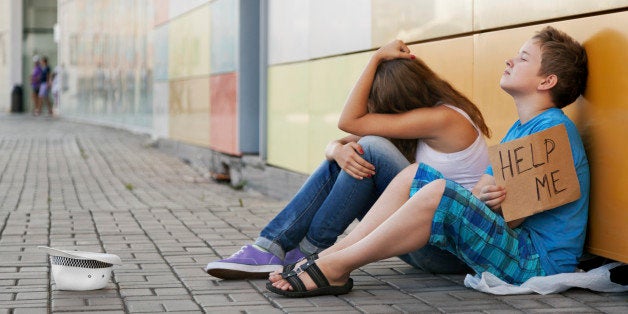
The Los Angeles Times recently ran a disturbing series on poverty and homelessness in San Bernardino County. It described appalling conditions for children--Eddie and Breanna--forced to live with their families in motels where sex trafficking, drug use and violence are prevalent. Children in these precarious situations are especially vulnerable to being abused and trafficked themselves.
Since 2006, there has been a 67 percent increase in the number of homeless children in this country. The recession pushed millions of families over the edge and many never recovered.
Today, 2.5 million children in the United States under age 18 are without a permanent roof to live under--more than ever before. One in five of these children lives in California. What makes this even more heartbreaking is many of these children are ineligible for federal homeless assistance programs because the government doesn't consider them homeless.
A narrow definition of homeless is currently used by the Department of Housing and Urban Development (HUD) and it is in dire need of revision. It only includes everyone sleeping on the street or in an emergency shelter. The children described by the Times would not have been considered homeless because they were staying at the motel.
Eddie and Breanna represent just two of the thousands of California families facing similar circumstances. Another California mother left her abusive husband, taking her five children with her. The family moves to a different location every few nights, sometimes staying with friends, other nights in motels, even sneaking into a grandmother's assisted living facility, which does not permit overnight guests. This family is also not considered homeless.
The effect of the HUD definition in undercounting homeless families is startling. Nationwide, HUD estimates the number of homeless people in households that include children at 222,197, while an expanded definition used by the Departments of Education and Health and Human Services (HHS) puts the count of homeless school-aged children at 1.25 million. This means HUD, which directs federal homelessness resources, is off by a factor of at least five.
The effect is even more acute in some communities. In Los Angeles County, HUD estimates there are 6,678 homeless individuals in households with at least one child, while the more accurate definition counts 61,639 homeless students. In this case, HUD is off by a factor of 10.
I have introduced a bipartisan bill with Senator Rob Portman, the Homeless Children and Youth Act, to expand the HUD definition and make families eligible for vital federal homeless assistance programs. The bill would require HUD to use the same definition used by other federal departments. That definition recognizes the reality of homelessness in this country today and includes children like Eddie and Breanna.
While changing the definition won't end child and family homelessness, the bill would help alleviate the suffering of thousands of children and their families and prevent the long-term emotional and developmental effects caused by homelessness.
Child homelessness is particularly acute in California. While the state has 12.5 percent of the country's population, it has 20 percent of the country's homeless children.
The Department of Education calculated that during the 2012-2013 school year, nearly 260,000 school-aged children experienced homelessness in California, an increase of nearly 40,000 children over 2010-2011--just two years prior.
However, HUD counted only 25,094 people in households in California with at least one child as homeless.
California's high cost-of-living puts many more children at risk. Currently, 34 percent of households spend more than half of their income on rent, increasing the risk that a job loss or health care emergency could result in homelessness.
By requiring HUD to use the expanded definition, our bill would ensure these vulnerable children are counted. It would allow communities to make funding decisions according to local needs.
Currently, communities and nonprofits seeking to prioritize services for homeless children and families are less competitive when applying for HUD funding.
Addressing child homelessness would also help address the devastating cycle of problems it triggers.
An abundance of research demonstrates that homelessness causes tremendous stress in children. It hinders their ability to learn and develop social skills. As a result, many homeless children perform poorly in school and are unable to escape the cycle of poverty.
Child homelessness is a stain on our society--the richest country in the world should not stand by as 2.5 million children are robbed of their futures. Addressing this problem requires we first acknowledge it exists--by counting every homeless child.
